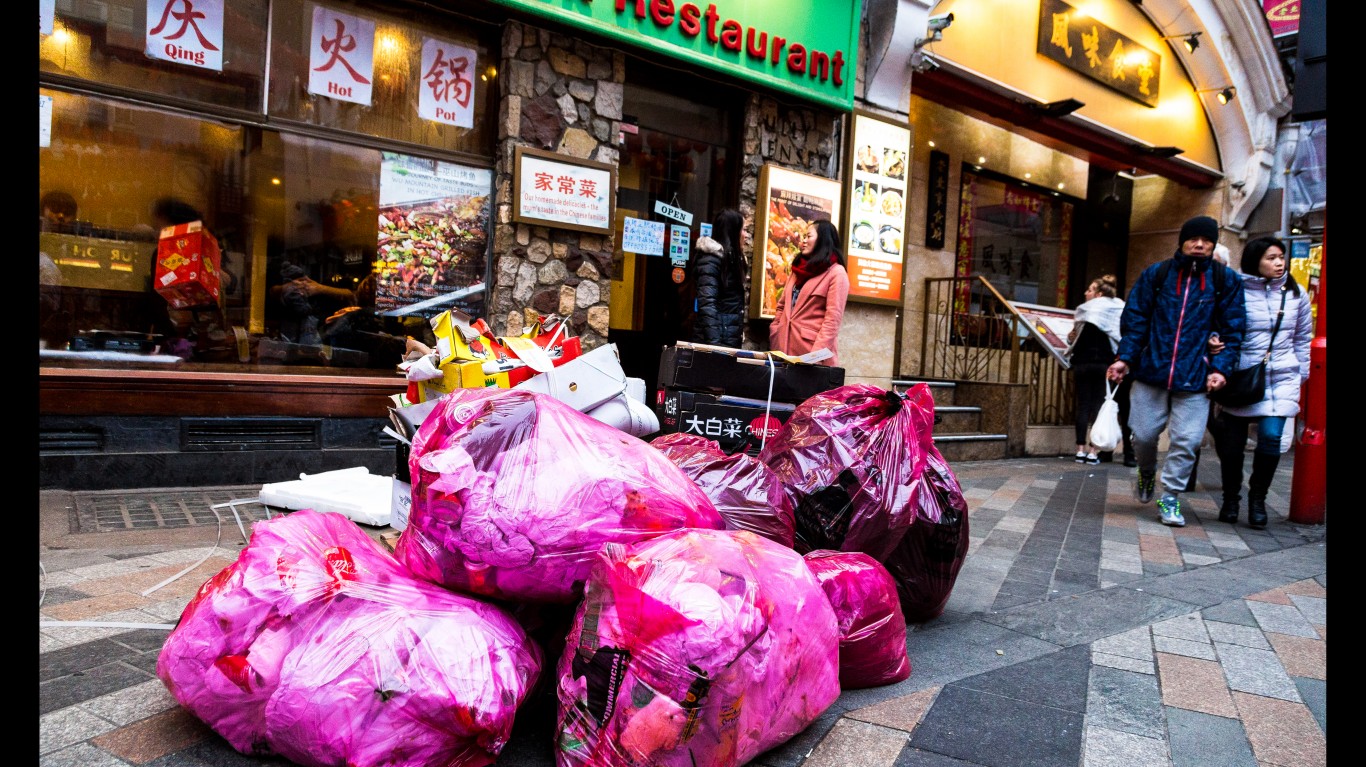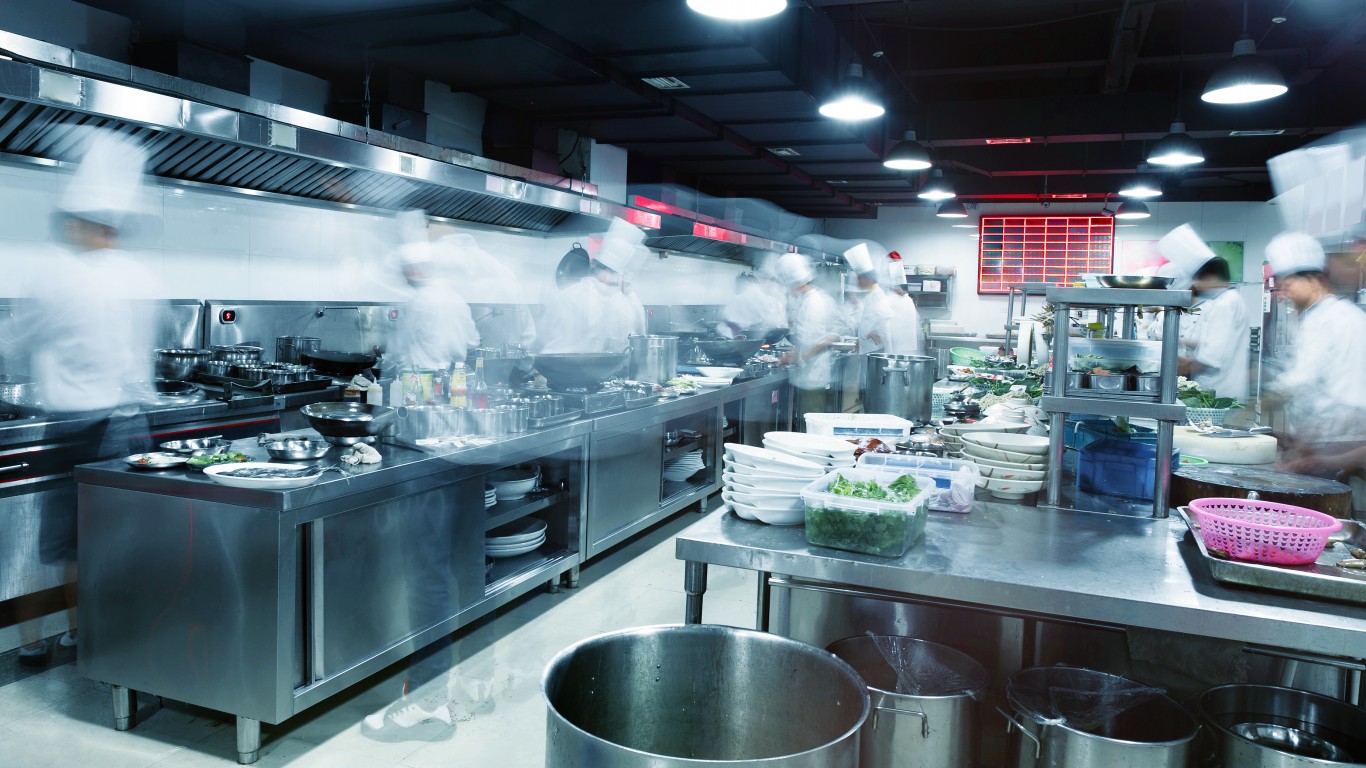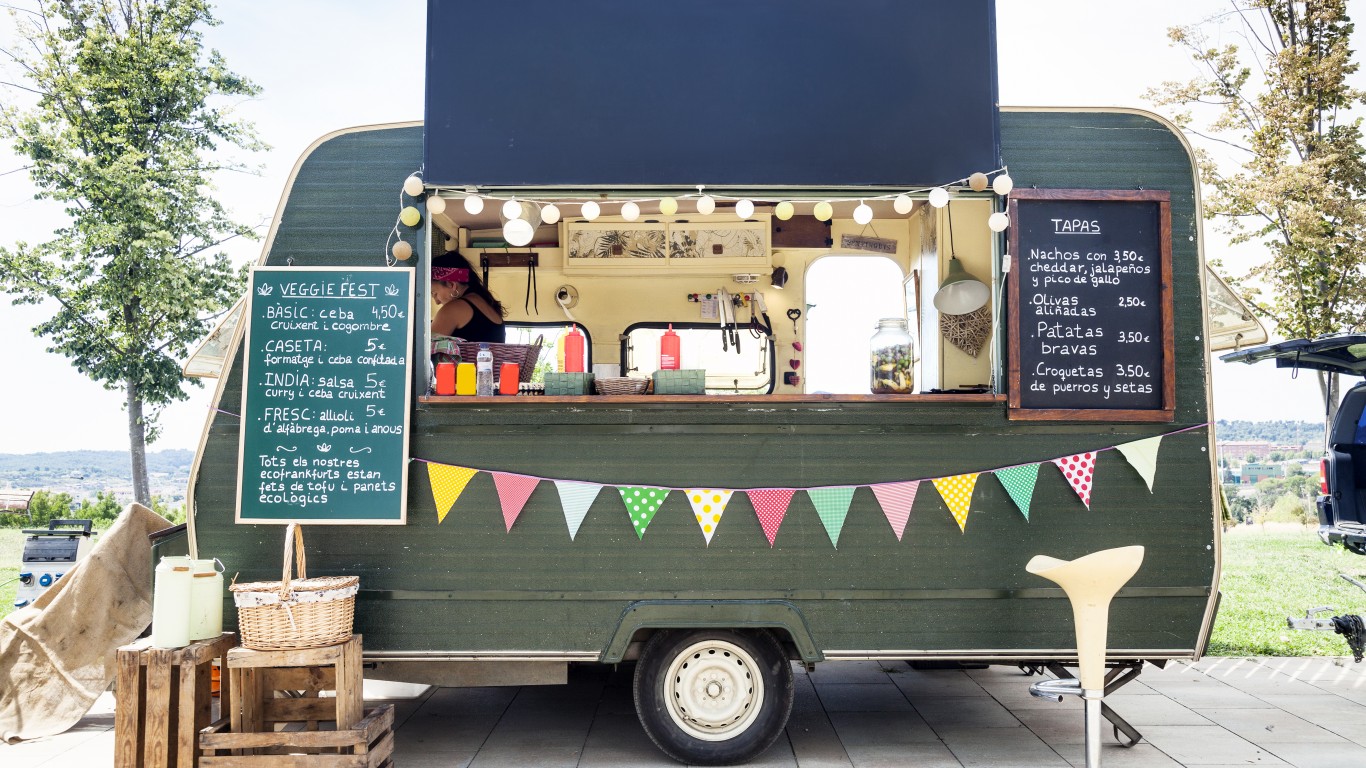
There are three main facets to the typical restaurant experience:
Ambiance, meaning the overall feeling of the place. This is shaped by numerous elements, including interior design, seating comfort, lighting, sound level, and even sometimes the nature of the clientele. (A table full of raucous drunks, for instance, generally doesn’t betoken a pleasant dining experience.)
Food (obviously). This is most likely the main reason you came to the restaurant in the first place. A good selection of beer, cocktails, and/or wine — and there are at least 11 ways to tell if a wine is actually good — might also be a factor.
Service. This covers everything from the timing and care with which dishes are served (though these last factors are not always within the server’s control) to the warmth of the welcome and the efficiency and personality of the servers. And some are known for their service — these are the restaurant chains with the happiest customers.
A good restaurant does well with all three on a reasonably consistent basis. It’s certainly possible to have a bad experience in an otherwise admirable eating place — even if it’s one of the best restaurants in America — but it’s the exception, and the restaurant management or staff will usually take steps to make things better.
A bad restaurant may have redeeming qualities — a great view, a nice selection of craft beers, that irresistible artichoke dip — but will almost certainly not leave a good taste in the diner’s mouth, either literally or figuratively.
Of course, it’s not always possible to tell how good the food will be before your first bite, but aspects of the ambiance and service — and hints about the food offered by the menu — can provide warning signs that you’re probably not going to have a pleasant experience.
Click here for 16 signs you’re eating in a bad restaurant.
What to do when these signs are apparent? If it’s logistically and socially possible, just leave. Say you’re sorry; make up an excuse about the babysitter; just get out. If this isn’t possible (you’re embarrassed to make a scene; you’re somebody else’s guest), make the best of it by ordering as little as possible and avoiding potential trouble spots (supposedly fresh seafood, overly complicated dishes). Then eat only what you want, pay the check, and get out of there as soon as you can. You can always stop for a pizza on the way home.

Ambiance: Empty restaurant
This one’s easy: If it’s mealtime and your chosen eating place is empty (especially if their nearby competition is bustling), well, maybe the universe is sending you a message.
[in-text-ad]

Ambiance: Blaring music
Most restaurants provide recorded music as part of the experience, but it shouldn’t be so loud or intrusive that conversation becomes impossible. The same goes for live music. Unless you’re in a place that doubles as a concert venue, it should be tasteful and unobtrusive. Do you really want to listen to a piano-banger doing ersatz Billy Joel or a punkabilly band playing “Brown-Eyed Girl” while you’re savoring your tuna tartare?

Ambiance: Unpleasant aromas
Does the restaurant smell like cleaning products (as when a server sprays Windex on the next table over)? Is there a reek of garbage leaking in from the back door, or a stench coming from the restrooms? Did your server douse himself or herself with an excess of Old Spice or Jungle Gardenia? These odors will not enhance the dining experience, to say the least. If a restaurant smells like anything at all, it should be food.

Ambiance: Uncomfortable seating
When you settle down in a restaurant for a leisurely meal, you want to settle down in comfort because you’re going to be there for a while. Rickety or narrow chairs, benches with no backs, cramped booths, or tiny tables (often jammed so closely together that you and your neighbors bump elbows) are hardly conducive to pleasant dining.
[in-text-ad-2]

Ambiance: Dirty tables, table settings, or menus
If your tablecloth is stained or your bare tabletop is sticky; if there is lipstick on the glasses; if bits of dried food still cling to your fork; if the menu you’re handed is dog-eared and grease-stained…well, let’s just say that hygiene obviously isn’t the restaurant’s strong suit, and you might think twice about actually eating their food.

Ambiance: Shouting from the kitchen; fights in the dining room
Certain restaurant-themed reality shows aside (we’re not mentioning names, Gordon Ramsay), kitchen staff should work in a state of harmony, not combat. If you hear yelling from the kitchen — or witness strife between servers or the manager and the staff in the dining room — get out if you can. Rancor never brings anything good to the table.
[in-text-ad]

Ambiance: Dirty bathrooms
There’s nothing like a poorly lit bathroom with wet floors and counters or overflowing trash cans to break the spell of an otherwise enjoyable dining experience. Of course, restaurants that provide enjoyable dining experiences rarely have dirty bathrooms — so when you find one, you’re probably in the wrong kind of place.

Food: Silly menu names
Unless you’re in a theme restaurant geared more towards entertaining the kids than providing a good culinary experience, menus are no place for silly puns or baby talk. It’s guacamole, not “Guac Your World.” And entree categories are beef and chicken, not “Moo Moo” and “Cluck Cluck.” (It is also good practice to be suspicious of restaurants whose menus claim that a certain dish is prepared “according to the chef’s whim.” You want skill and consistency from your chef, not whimsy.)

Food: Very long menu
There are diner menus that go on for pages, offering all-day breakfasts, sandwiches, burgers, salads, Greek or Italian specialties, all-American entrees, and more, and they somehow seem to mostly deliver. But then they’re almost certainly using canned, frozen, and/or premade ingredients and the culinary quality isn’t high, nor is it expected to be. When a supposedly serious restaurant menu offers too many choices, though, it’s almost always a bad sign.
Bear in mind that what constitutes “too many” might depend on the kind of cuisine. Chinese or Italian restaurants, for example, might be able to offer scores of dishes because they combine the same ingredients in numerous ways. A French restaurant or steakhouse with 30 appetizers and a like number of main dishes and desserts is another story.
[in-text-ad-2]

Food: Too many cuisines offered
There are legitimate reasons for some restaurants to mix cuisines: Sushi bars are often found in Korean restaurants because Koreans eat a lot of sushi; French bistros sometimes offer couscous and other Moroccan fare because their owners lived in Morocco; Chinese-Cuban and Chinese-Indian are legitimate cross-cultural cooking traditions. But a menu that proposes, for example, Japanese, Chinese, Thai, and Malaysian — or Cajun, Mexican, Italian, and American — dishes all at once probably doesn’t do any of them well.

Food: Specials that aren’t seasonal (or special)
It’s a frigid January and one of the appetizer specials is an heirloom tomato salad. It’s September and the menu proposes a rack of “spring lamb.” It’s any time of year and the special of the day is a cheeseburger…If a restaurant goes to the trouble of showcasing particular ingredients, they should be appropriate to the time of year, and a dish called out as a special should be, well, special. Chefs who don’t observe these conventions are probably chefs who aren’t truly invested in their jobs.
[in-text-ad]

Service: No greeting (or an unfriendly one)
Unless you’re at a casual restaurant where a sign (or a passing server) invites you to seat yourself, someone should greet you, preferably warmly, when you walk into a place. A host might be temporarily away from the front while seating other guests, but the absence should be brief. If you have to stand around waiting to be noticed for more than a minute or two — or if the host treats you like an annoyance rather than a valued customer — don’t expect much from the rest of your dining experience.

Service: Reservation not honored on time
More and more restaurants these days observe a no-reservations policy. In establishments like that, you take your chances and it’s not unreasonable to be asked to wait 30 minutes or an hour or even longer. If the place takes reservations, however, and you make one and then arrive on time, it’s reasonable to expect to be seated more or less at the appointed hour. Ten or 15 minutes’ grace period while you have a drink at the bar? Sure. An hour or more because management didn’t know how to pace their tables? Sorry, gotta go.

Service: Unreasonably long wait for service
You’re shown to your table and then…forgotten. If you’re lucky, a busser might pour you some water, but your server is busy elsewhere and the manager is either dealing with some other issue or simply out to lunch (even if it’s dinnertime). There you sit with no drinks, no menu, no acknowledgement of your presence. Sure, restaurants get very busy, especially at prime eating hours (generally about noon to 2 p.m. and 7 to 9 p.m., though this varies according to the location and the restaurant), but five or ten minutes of sitting and talking amongst yourselves is more than enough.
[in-text-ad-2]

Service: Uncleared tables
If the empty tables around you are still crowded with dirty dishes and glasses — or if you’re finished what’s on your own table and the no-longer-Instagrammable plates are just sitting there, the traces of your meal congealing — you’re almost certainly in a restaurant where nobody is paying attention, which is to say a restaurant you probably never need to visit again.

Service: Poorly timed dishes
Your friends have their appetizers but yours is still sitting under a heat lamp in the kitchen. Or you’re all eating your first courses when the main dishes come out. Or the gap between firsts and mains stretches out for 20, 30, 40 minutes. These issues are usually not the fault of service but of a badly run kitchen, but your server should notice, update you on your order’s progress, refill drinks if needed, and just generally make the situation as painless as possible. But of course, that’s not likely to happen in a bad restaurant.
Credit Card Companies Are Doing Something Nuts
Credit card companies are at war. The biggest issuers are handing out free rewards and benefits to win the best customers.
It’s possible to find cards paying unlimited 1.5%, 2%, and even more today. That’s free money for qualified borrowers, and the type of thing that would be crazy to pass up. Those rewards can add up to thousands of dollars every year in free money, and include other benefits as well.
We’ve assembled some of the best credit cards for users today. Don’t miss these offers because they won’t be this good forever.
Flywheel Publishing has partnered with CardRatings for our coverage of credit card products. Flywheel Publishing and CardRatings may receive a commission from card issuers.
Thank you for reading! Have some feedback for us?
Contact the 24/7 Wall St. editorial team.
 24/7 Wall St.
24/7 Wall St. 24/7 Wall St.
24/7 Wall St.

